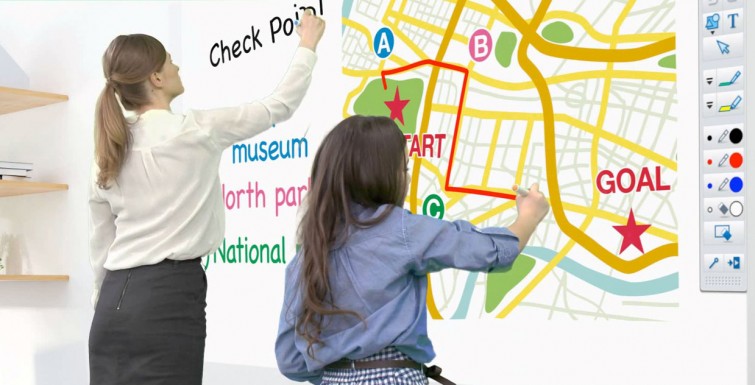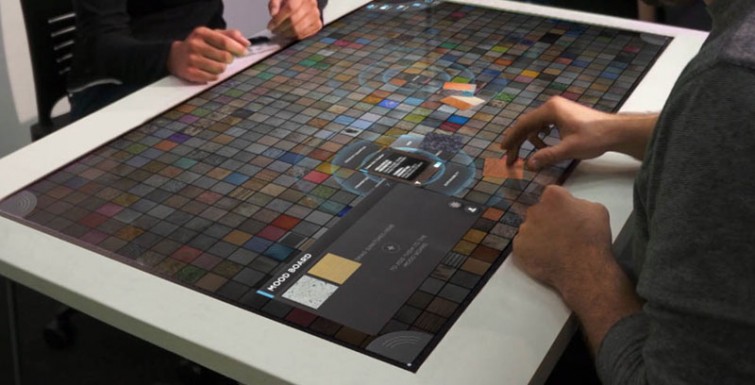A requirement for upgraded AV capabilities saw Christchurch New-Zealand-based St Margaret’s College turn to imaging solutions specialists Epson, with the Epson EB-485Wi and EB-585Wi interactive ultra-short throw projectors chosen to be utilised acrossed the school.
Blake Richardson, technical systems manager at St Margaret’s College, says the school required upgrades for two main reasons.
“Due to the Canterbury earthquakes, we lost over 80% of our buildings and secondly the projectors we had were a mix of new and old from various manufacturers,” Richardson explains.
Richardson and his team evaluated all the current projectors on the market that would meet St Margaret’s high standards.
“After the earthquakes a new campus plan was drawn up which included three new classroom blocks and the renovation of a fourth block,” he says. “Our requirements meant that the projectors all be the same brand, of particularly high quality and that they fully met the purpose for which they would be used.”
St Margaret’s College uses projectors in every one of their learning spaces, so a bright and clear image was essential, Richardson says.
The EB-485Wi and EB-585Wi are reliable interactive projectors packed with innovative interactive features.
“We were particularly impressed with the high quality of the image and the low cost of replacement lamps for both EB-485Wi and the EB-585Wi projectors. We also really liked the fact that these projectors allowed us to do away with our Interactive White boards and give each classroom the same features.”

“We use the EB-485Wi and the EB-585Wi ultra-short throw projectors in all of our learning spaces and these provide a nice bright and clear image,” Richardson says. “Our large boarders dining room has an Epson EB-X14 installed, which is used for internal and external events. We also have two Epson EB-G5750WU installation projectors attached to a HDMI matrix in our auditorium and an Epson EB-G6250W which projects onto our large cyclorama screen. “
He adds, “We are very happy with all of the Epson projectors we have chosen and feedback from our staff and students is very positive.

“Our new EB-485Wi and the EB-585Wi ultra-short throw projectors work very well in the classroom and are a massive improvement from our older projectors.”
The EB-595Wi projector is Epson’s flagship interactive projector model, and is the world’s first 3LCD, finger touch-enabled interactive projector, ideal for the classroom environment. Epson are also the leaders of interactive projectors in the market.

The EB-595Wi boasts better brightness, up to 3,300 lumens allowing the screen to be easily viewed from anywhere in a classroom without dimming lights, increased contrast ratio (now 10,000:1) and longer lamp life (up to 6,000 hours in ECO mode), giving better cost efficiencies and savings.
The EB-595Wi offers digital connectivity including two HDMI ports with one port supporting MHL (Mobile High Definition Link) for mirroring connectivity with Android mobile devices.
There is also wireless projection when used with an optional LAN card (using peer to peer wireless and Epson’s EasyMP Network Projection software) and projector control using multi-PC projection software with a Moderator function, which enables up to 50 devices to connect to the projector and the managing and controlling of up to four images displayed on the screen. In terms of audio there is a 16W built-in speaker with enough audio power to fill most classrooms and advanced networking capabilities for when users need to monitor, control and present from a remote location. There is no driver installation required for PCs.
The EB-595Wi projectors take Epson’s ultra-short throw interactive projectors range up a further notch with not only finger touch-enabled interactivity but also PC Interactivity. Epson’s latest and enhanced PC interactive software Easy Interactive Tools provides an intuitive user interface and enhanced interactive features.

The interactive EB-595Wi offers dual pen interactivity enabling teacher and student to annotate at the same time. The smaller pen that comes with selectable function side button and a new on-screen projector control tool bar that allows users to power OFF, switch sources, zoom in and out and turn the volume up and down.
All Epson projectors, including both the EB-485Wi and EB-585Wi projectors are based on superior 3-chip LCD technology, giving vibrant realistic colours, high quality detail and solid reliability.
Epson projectors also 3LCD engines that have no colour wheel with a white segment which, in practical terms, means Epson projectors have up to 3x brighter colours than their leading competitive 1-chip DLP projectors



